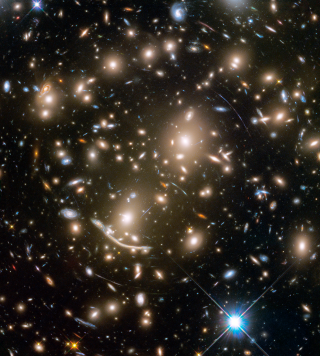Bibcode
Tsatsi, A.; Lyubenova, M.; van de Ven, G.; Chang, J.; Aguerri, J. A. L.; Falcón-Barroso, J.; Macciò, A. V.
Bibliographical reference
Astronomy and Astrophysics, Volume 606, id.A62, 10 pp.
Advertised on:
10
2017
Journal
Citations
36
Refereed citations
34
Description
We present new evidence for eight early-type galaxies (ETGs) from the
CALIFA Survey that show clear rotation around their major photometric
axis ("prolate rotation"). These are LSBCF560-04,
NGC 0647, NGC 0810, NGC
2484, NGC 4874, NGC
5216, NGC 6173, and NGC
6338. Including NGC 5485, a known case of
an ETG with stellar prolate rotation, as well as UGC
10695, a further candidate for prolate rotation, we report ten
CALIFA galaxies in total that show evidence for such a feature in their
stellar kinematics. Prolate rotators correspond to 9% of the
volume-corrected sample of CALIFA ETGs, a fraction much higher than
previously reported. We find that prolate rotation is more common ( 27%)
among the most massive ETGs (M∗ ≳ 2 ×
1011M⊙). We investigated the implications of
these findings by studying N-body merger simulations, and we show that a
prolate ETG with rotation around its major axis could be the result of a
major polar merger, with the amplitude of prolate rotation depending on
the initial bulge-to-total stellar mass ratio of its progenitor
galaxies. Additionally, we find that prolate ETGs resulting from this
formation scenario show a correlation between their stellar
line-of-sight velocity and higher order moment h3, opposite
to typical oblate ETGs, as well as a double peak of their stellar
velocity dispersion along their minor axis. Finally, we investigated the
origin of prolate rotation in polar galaxy merger remnants. Our findings
suggest that prolate rotation in massive ETGs might be more common than
previously expected, and can help toward a better understanding of their
dynamical structure and formation origin.
Related projects

Galaxy Evolution in Clusters of Galaxies
Galaxies in the universe can be located in different environments, some of them are isolated or in low density regions and they are usually called field galaxies. The others can be located in galaxy associations, going from loose groups to clusters or even superclusters of galaxies. One of the foremost challenges of the modern Astrophysics is to
Jairo
Méndez Abreu

Traces of Galaxy Formation: Stellar populations, Dynamics and Morphology
We are a large, diverse, and very active research group aiming to provide a comprehensive picture for the formation of galaxies in the Universe. Rooted in detailed stellar population analysis, we are constantly exploring and developing new tools and ideas to understand how galaxies came to be what we now observe.
Anna
Ferré Mateu